This article was medically reviewed by Erik Kramer, DO, MPH and by wikiHow staff writer, Janice Tieperman. Dr. Erik Kramer is a Board-Certified Primary Care Physician at the University of Colorado. With over 15 years of experience, his clinical interests include obesity and weight management, diabetes care, and preventive care, as well as embracing a holistic approach to primary care. He received his Doctorate in Osteopathic Medicine (D.O.) from the Touro University Nevada College of Osteopathic Medicine and completed his residency at Central Maine Medical Center. Dr. Kramer is a Diplomate of the American Board of Obesity Medicine.
There are 12 references cited in this article, which can be found at the bottom of the page.
This article has been viewed 12,822 times.
Hip flexors are the muscles that connect your hips to your thighs, and provide a wide range of motion to your body. If you overwork these muscles, you can find yourself feeling sore in your hip and thigh area. To manage the pain, try using a variety of over-the-counter treatments and stretching exercises to ease your pain. If have a severe injury, visit your doctor so you can discuss further options. With proper treatment and good preventative measures, you’ll be better equipped to deal with any current and future hip flexor strains!
Steps
Home Treatments
-
1Ice the sore area every 3 to 4 hours for the first 3 days. Take a scoop of ice and wrap it in a clean cloth or paper towel. Next, sit or lie down while placing the ice onto the sore area for up to 20 minutes. If the pain continues, wait at least 3 hours before applying ice again.[1]
- Don’t apply an ice treatment for more than 20 minutes at a time.
- Ice packs also work well for this.
- Your immediate goal is to lower the swelling, so ice is most effective in the early days of the injury.[2]
-
2Take pain medicine to reduce any soreness. Use any over-the-counter NSAID to treat your pain. Before taking any doses, follow the packaging instructions so you don’t take too much medication at once. Since this type of medicine is hard on your stomach, don’t take it for more than 10 days straight.[3]
- You might have different health conditions that interfere with NSAIDs and other pain medications. If this is the case, talk to your doctor before using these medicines.
- Don’t take more than the recommended dose within a day.
Advertisement -
3Massage the sore area with ice in the first 72 hours. Fill a styrofoam cup with water and place it in the freezer. Wait 1 day or so for the water to completely freeze before removing the cup. Cut the rim of the styrofoam off the cup so a chunk of ice is exposed, then rub this ice over the sore section of skin. While sitting, work the ice cube in a circle for 5 to 10 minutes, and repeat the procedure every few hours as needed.[4]
- Don’t rub the ice on your skin for longer than 10 minutes, as this could cause skin damage.
- Give yourself ice treatments in the early days of your injury. After that, try switching to heat.[5]
-
4Give yourself time to rest and elevate your hip. Don’t exercise or put strain on your injury at any point. Instead, move slowly and carefully, allowing yourself plenty of time to lie down and rest.[6] Whenever you sit or lay down, rest your hip on a pillow to keep it comfortable. As you relax, elevate your sore hip above your heart to keep the swelling down.
- If you overwork yourself, you could end up doing more damage the strained hip flexor.
- While you don’t have to bedridden when you have a strained hip flexor, you shouldn’t be moving around too much.
-
5Perform heat therapy after 72 hours. After icing your strained hip flexor for 3 days, apply low heat to the injured area for an extended period of time. To do this, take a hot bath or recline with a heating pad or lamp, which provide topical heat. Unlike ice, you can use heat therapy for extended periods of time, instead of 20-minute increments.[7]
- When possible, try to use a lower heat setting on your devices.
Did you know? Hip flexor strain recovery varies per person. On average, it takes about 2 weeks for your body to heal.[8]
Stretches
-
1Tilt your pelvis 8 to 12 times to stretch your hips. Lay face-up on a flat surface, keeping your upper body flat and your knees bent upwards. While your feet are flat on the ground, tighten your core and buttocks, so your upper body can serve as an anchor during the stretch. Next, lift one foot a few inches or centimeters off of the ground, keeping it in place for 6 seconds. Lower your foot, then do the same movement with your opposite foot. Repeat at least 8 reps of this to lightly stretch your hip muscles.[9]
- If your hip is in a lot of pain, don’t do any exercises.
-
2Do a scissor stretch with your legs 8 times. Lay face-up on the floor, and lift your legs at a right angle from the ground. While keeping 1 leg bent, straighten the opposite leg. After holding this pose for around 6 seconds, alternate the position of your legs in the stretch.[10]
- For the stretch to be most effective, try keeping your legs around 30 cm (1 ft) off the ground.
-
3Put your feet together to perform a seated butterfly stretch. Sit in an upright position, keeping your back straight. Place your feet together in front of your groin area, leaving your knees outstretched to the sides. Lean forward until your hip muscles feel tense, then stay still for around 30 seconds. After half a minute has passed, sit back up in your original position.[11]
- Repeat this exercise at least 2 times.
- Stop stretching immediately if you ever feel intense pain during this exercise.
-
4Perform a kneeling stretch 2 to 4 times. Kneel on top of a folded towel with the knee attached to your sore hip, leaving your leg extended behind you. Bend your other leg forward at a right angle, with your opposite foot placed flat on the ground. While keeping your back straight, lunge forward from your hips. Hold this position for at least 15 seconds, then return to your original position.[12]
- Tilting your pelvis forward during the stretch will provide an additional stretch to your flexor muscles and tendons.
- This exercise is better to do than a standing lunge, as it doesn’t put as much strain on your hip.
-
5Tug your knees into your chest at least 2 times. Lay on your back along the edge of a table, bed, or another flat surface, letting your knees and legs dangle off the edge. Grip your unaffected knee and pull it into your chest, letting your hurt hip and leg relax as you do so. Pull your thigh into your chest until you feel it stretching, then hold it in place for at least 15 seconds.[13]
- This stretch helps stretch your hips without pulling on your hurt flexor.
- Don’t do this stretch more than 4 times, as you don’t want to overwork your leg.
-
6Do several reps of forearm planks for 15 to 30 seconds. Position yourself close to the ground, mimicking a push-up position. Place your forearms in parallel lines next to one another, then tighten your core and buttocks muscles. Lift your chest several inches or centimeters above the ground for 15 to 30 seconds, then let your body relax.[14]
- Don’t overdo this exercise. If your hip feels especially tired, give it a break.
Tip: Ask your doctor how often you should be stretching. Try not to stretch more than once a day, so you don’t strain your muscles further.[15]
Medical Treatment
-
1Visit your doctor if the pain is severe. If you’re suffering from debilitating pain, try reaching out to a healthcare professional. Mention the details of your strain to the doctor, and see if they suggest more intensive treatment. During this appointment, ask your doctor about the estimated recovery time, as well as the activities that you should be avoiding. If needed, try scheduling a follow-up appointment so your doctor can check on your progress.[16]
- Consider why your pain may not be improving. For instance, ask yourself if your strain is caused by trauma or possibly a medical issue like septic infected joint, tumor, or bone necrosis (which can occur due to prolonged prednisone use). Similarly, you could have rheumatoid arthritis in your hip, sciatica pain in your back that's spread to your hip, or focal pain from your thighs. Finally, consider if you might have referred abdominal pain from a condition like appendicitis or an inguinal hernia.
- If you’re dealing with severe pain, ask your doctor if they can prescribe stronger pain medication.
- Before you go to the doctor, brainstorm different questions you may have.
Warning: With any hip injury that causes instability, it's best to see your doctor before you start stretching to make sure you don't have a labrum tear, which can cause hip flexor pain.
-
2Enroll in physical therapy if at-home exercises don’t help. Ask a healthcare professional if physical therapy is a good option for your personal recovery. If so, use a referral or search online to find a treatment clinic near you. During your scheduled sessions, work with your therapist to stretch the affected area and the muscles around it, so you can transition back to your normal life.[17]
- Your physical therapist might also help adjust your activity level so you can get back into the swing of your normal schedule.
-
3Get surgery if the muscle is fully torn. Talk to your doctor and see if surgery is the most realistic solution for your hip flexor injury. If so, schedule an appointment with a specialized healthcare professional, who will sew the torn pieces of muscle back together.[18]
- Ask your doctor for a referral if you need to get surgery.
Injury Prevention
-
1Warm up your body before exercising. Stretch all areas of your body, including your arms, legs, and hips. Focus specifically on areas that you intend to use a lot during exercise, so you aren’t as likely to strain them later on. If you don’t warm-up ahead of time, you could be setting yourself up for an unwanted strain later on.[19]
- Try doing exercises that specifically stretch your hip flexors.
-
2Try to exercise on a daily basis. Pick a time each day to work out, even if your activity isn’t that intense. Try to exercise for the same amount of time each day so your body can properly adjust to the workload. If your body feels sore after a workout, try taking it easy in the future.[20]
- If you do an intense workout when you haven’t been exercising regularly, you could set yourself up for a strain.
-
3Don’t push yourself too hard during exercise. Know your limits, whether it’s running, weight lifting, or some other workout. While it’s incredibly rewarding to break a record or achieve a personal exercise goal, you don’t want to reach these accomplishments at the expense of your health. If your muscles feel sore and overworked, don’t try and continue the workout.[21]
- Try resting for a minute or 2 between each exercise.
-
4Cool down after you work out. As you did with your warm-ups, re-stretch your arm, leg, and hip muscles before completely ending your workout. Help your muscles transition from a working to a stationary state, so your hip flexors (and other muscles) do get pulled or strained in the process.[22]
Things You’ll Need
Using Over the Counter Treatments
- Ice
- Paper towel or cloth
- Pain medication
- Water
- Styrofoam cup
- First-aid tape (optional)
- Heating pad or heat lamp
Stretching the Affected Areas
- Towel
Warnings
- Don’t perform any strenuous activities for 10 to 14 days after you initial hip flexor injury.[23]⧼thumbs_response⧽
References
- ↑ https://medlineplus.gov/ency/patientinstructions/000682.htm
- ↑ https://www.unitypoint.org/fortdodge/article.aspx?id=a0db18fd-3282-45f4-bbba-a43be1f34be2
- ↑ https://my.clevelandclinic.org/health/drugs/11086-non-steroidal-anti-inflammatory-medicines-nsaids
- ↑ https://www.uofmhealth.org/health-library/tw4354spec
- ↑ https://www.unitypoint.org/fortdodge/article.aspx?id=a0db18fd-3282-45f4-bbba-a43be1f34be2
- ↑ https://medlineplus.gov/ency/patientinstructions/000682.htm
- ↑ https://orthoinfo.aaos.org/en/diseases--conditions/hip-strains
- ↑ https://www.unitypoint.org/livewell/article.aspx?id=591d8cf1-1ee5-4cb3-b662-a5f21f6f13bc
- ↑ https://myhealth.alberta.ca/Health/aftercareinformation/pages/conditions.aspx?hwid=bo1616
- ↑ https://myhealth.alberta.ca/Health/aftercareinformation/pages/conditions.aspx?hwid=bo1616
- ↑ https://www.beaconortho.com/blog/common-hip-flexor-injuries-and-treatments/
- ↑ https://www.healthoutcome.org/condition/5/plantar-fasciitis/recommendation/561
- ↑ https://myhealth.alberta.ca/Health/aftercareinformation/pages/conditions.aspx?hwid=bo1616
- ↑ https://www.beaconortho.com/blog/common-hip-flexor-injuries-and-treatments/
- ↑ https://myhealth.alberta.ca/Health/aftercareinformation/pages/conditions.aspx?hwid=bo1616
- ↑ https://www.mayoclinic.org/symptoms/muscle-pain/basics/when-to-see-doctor/sym-20050866
- ↑ https://medlineplus.gov/ency/patientinstructions/000682.htm
- ↑ https://orthoinfo.aaos.org/en/diseases--conditions/hip-strains
- ↑ https://www.nhs.uk/live-well/exercise/how-to-warm-up-before-exercising/
- ↑ https://intermountainhealthcare.org/services/orthopedics/services/hip/hip-flexor-tendinopathy/
- ↑ https://intermountainhealthcare.org/services/orthopedics/services/hip/hip-flexor-tendinopathy/
- ↑ https://orthoinfo.aaos.org/en/diseases--conditions/hip-strains
- ↑ https://orthoinfo.aaos.org/en/diseases--conditions/hip-strains
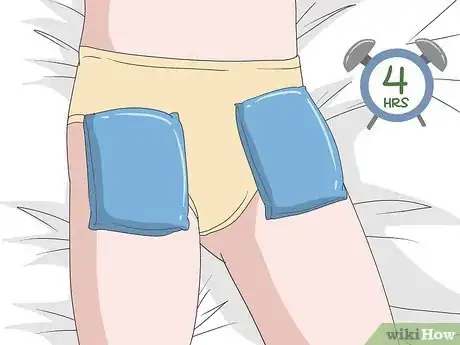
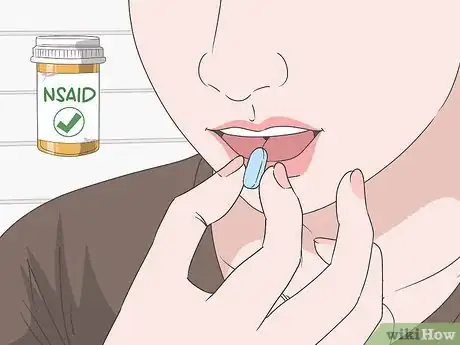
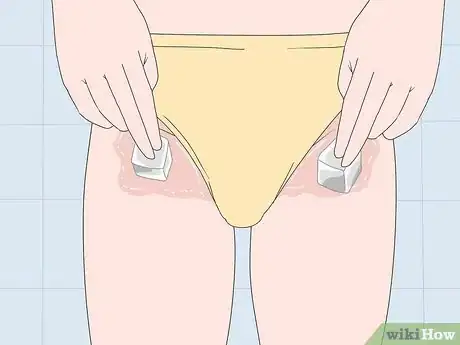
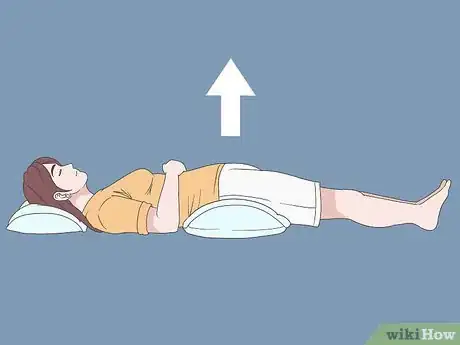
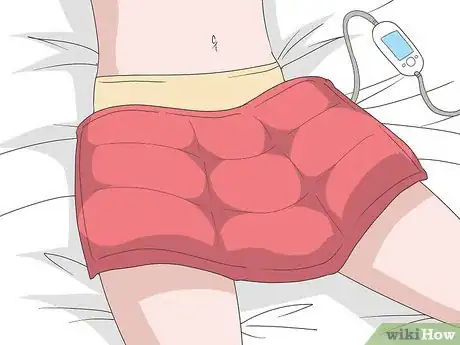
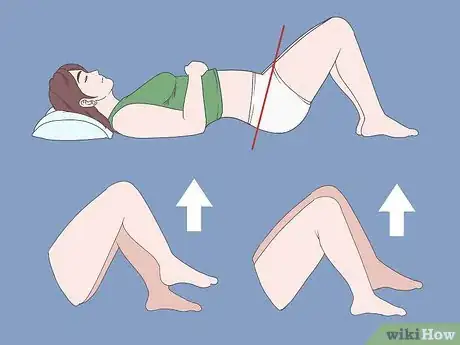
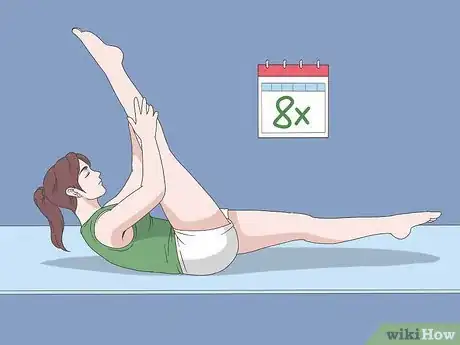
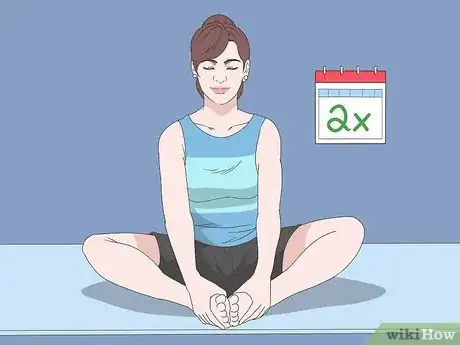


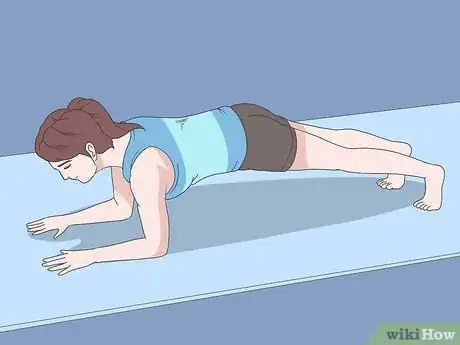
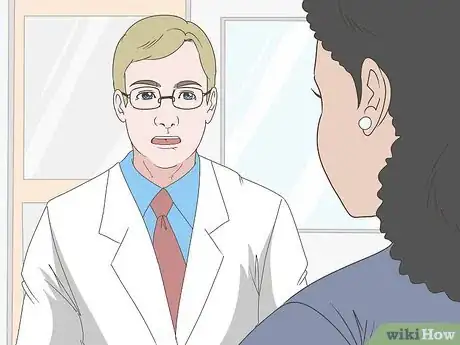
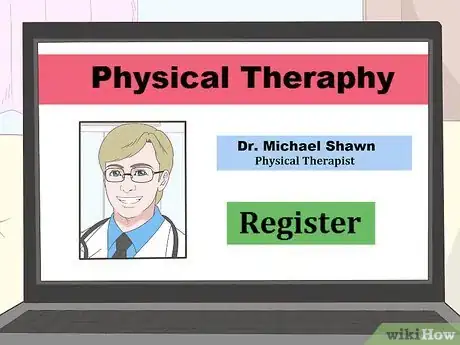
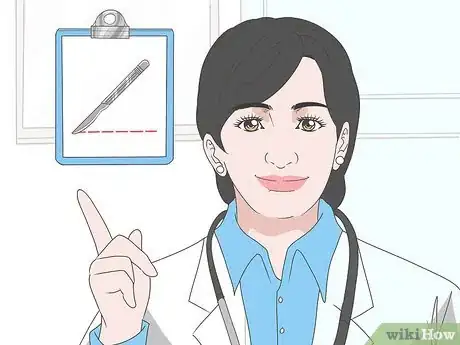
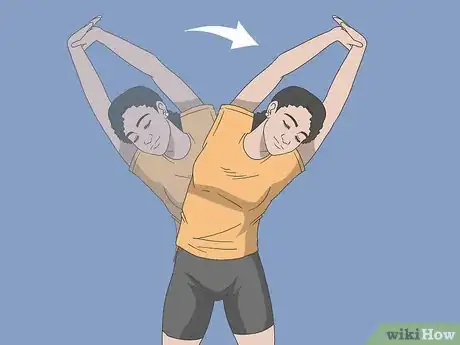

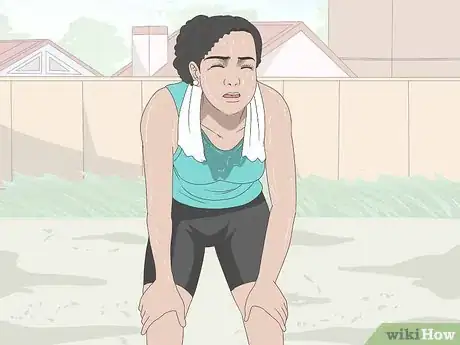
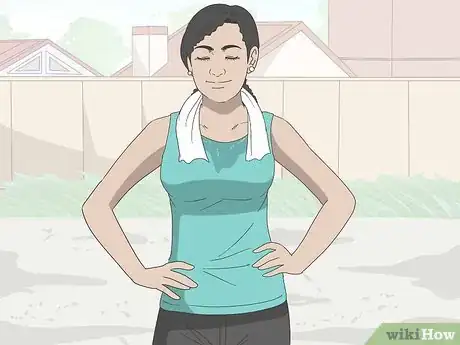
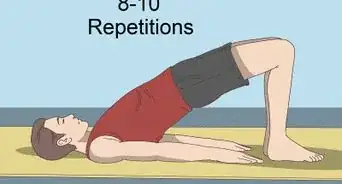
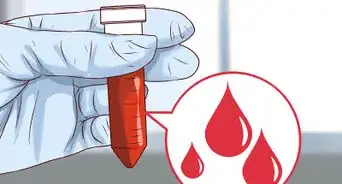
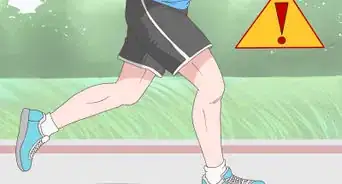

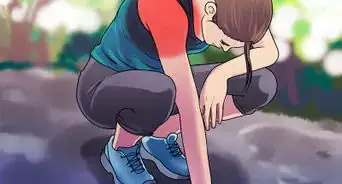
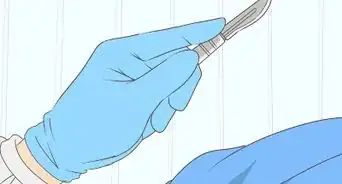
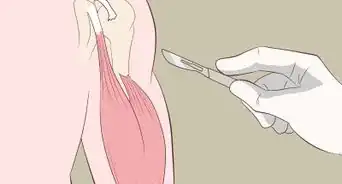
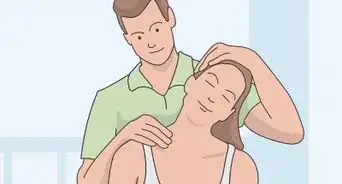









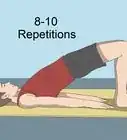






































Medical Disclaimer
The content of this article is not intended to be a substitute for professional medical advice, examination, diagnosis, or treatment. You should always contact your doctor or other qualified healthcare professional before starting, changing, or stopping any kind of health treatment.
Read More...